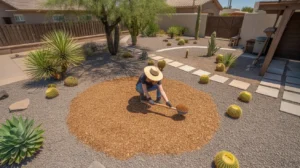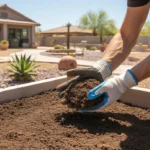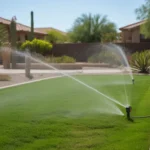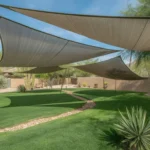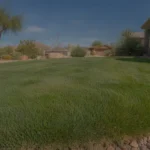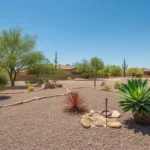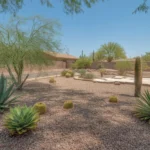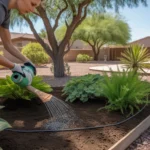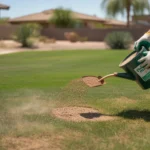As the searing summer sun beats down on Southeast Valley yards, maintaining proper soil hydration becomes a top priority. One key strategy is using the right amount of mulch to insulate soil, retain moisture, and protect plant roots. But how deep should that mulch layer be? Let’s explore the delicate balance of mulch depth to keep your yard thriving through the intense Arizona heat.
Why Mulch Matters in the Southeast Valley Summer
Mulch acts as a protective blanket over your soil, shielding it from direct sun and heat. This natural barrier helps regulate soil temperature, preventing extreme fluctuations that can stress plant roots. By keeping the soil cooler, mulch also slows evaporation, allowing precious moisture to linger longer where plants need it most.
In the Southeast Valley’s arid climate, every drop of water counts. Mulch maximizes the efficiency of your irrigation by reducing runoff and allowing water to percolate slowly into the soil. This steady hydration promotes deeper root growth, making plants more resilient to drought and heat stress.
Mulch also suppresses weed growth by blocking sunlight from reaching the soil surface. With fewer weeds competing for water and nutrients, your plants can thrive even in the challenging summer conditions. As mulch breaks down over time, it adds organic matter to the soil, improving its structure and water-holding capacity.
Finding the Sweet Spot: Ideal Mulch Depth
While mulch offers numerous benefits, applying too much can be counterproductive. Excessive mulch depth can suffocate plant roots, preventing proper air circulation and water penetration. It can also create an overly moist environment that encourages fungal growth and pest problems.
So what’s the ideal mulch depth for Southeast Valley yards in summer? Aim for a layer that’s 2 to 4 inches deep. This range provides ample insulation and moisture retention without smothering plants. For most materials like bark chips, shredded leaves, or straw, a 3-inch layer is a safe bet.
When applying mulch, be sure to leave a few inches of space around the base of trees, shrubs, and perennials. Avoid piling mulch directly against stems or trunks, as this can trap moisture and lead to rot. Taper the mulch layer so it’s thinner near the plant base and thicker farther out.
Choosing the Right Mulch for Your Yard
Not all mulches are created equal when it comes to summer hydration. Organic materials like bark chips, wood chips, shredded leaves, and straw break down over time, enriching the soil as they decompose. They also have excellent water-holding capacity, making them ideal for moisture retention.
Inorganic mulches like gravel or pebbles are better suited for xeriscapes or areas with excellent drainage. While they don’t retain moisture as effectively, they can still help moderate soil temperature and reduce evaporation. Inorganic mulches also last longer, requiring less frequent replenishment.
Consider your yard’s specific needs when selecting a mulch type. For areas with poor drainage, opt for coarser materials like bark nuggets that allow better air circulation. In windy spots, choose heavier options like shredded hardwood that are less likely to blow away.
Maintaining Mulch Through the Summer
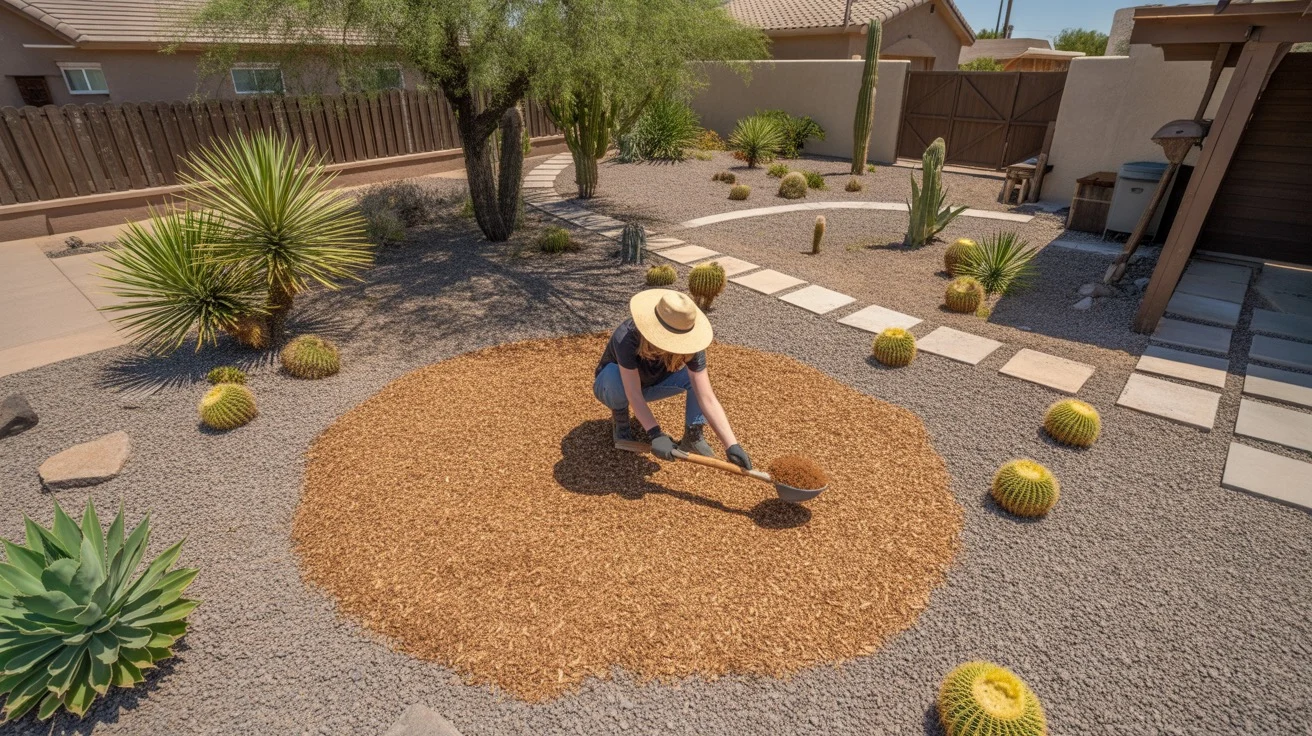
As the summer progresses, keep an eye on your mulch layer. Organic materials will gradually decompose and settle, so you may need to top off the layer to maintain the desired depth. Use a rake to fluff up compacted mulch and improve water penetration.
If you notice areas where mulch has washed away during monsoon rains or irrigation, redistribute it evenly. Bare patches can leave soil vulnerable to heat and evaporation. Regularly inspect mulched areas for signs of fungal growth or pest activity, addressing any issues promptly.
As summer gives way to fall, assess your mulch layer and replenish as needed. A fresh application before winter helps insulate soil and protect plants from cold snaps. By maintaining a consistent mulch depth year-round, you’ll create a more resilient and water-wise yard.
Mulch Depth Matters for Summer Hydration
In the unrelenting Southeast Valley summer, proper mulch depth is a critical tool for keeping your yard hydrated and healthy. By aiming for that 2 to 4-inch sweet spot, you’ll insulate soil, retain moisture, and give your plants the best chance to thrive in the searing heat.
Remember, the right mulch depth is just one piece of the summer yard care puzzle. Pair it with proper irrigation, plant selection, and maintenance practices to create a landscape that can withstand the toughest Arizona summers. With a well-balanced mulch layer as your ally, you’ll be on your way to a yard that stays vibrant and resilient, no matter how high the mercury rises.

